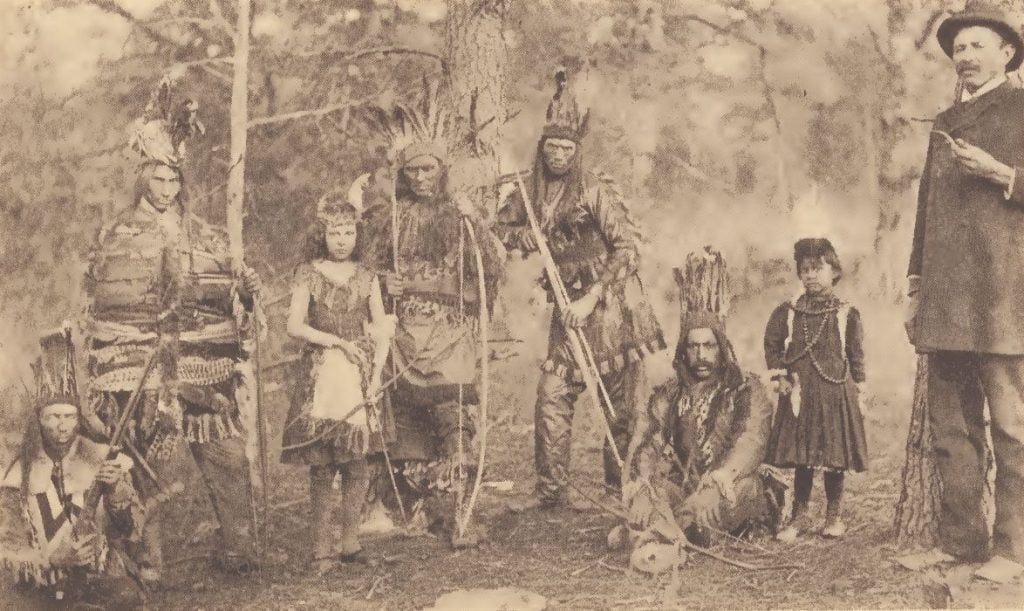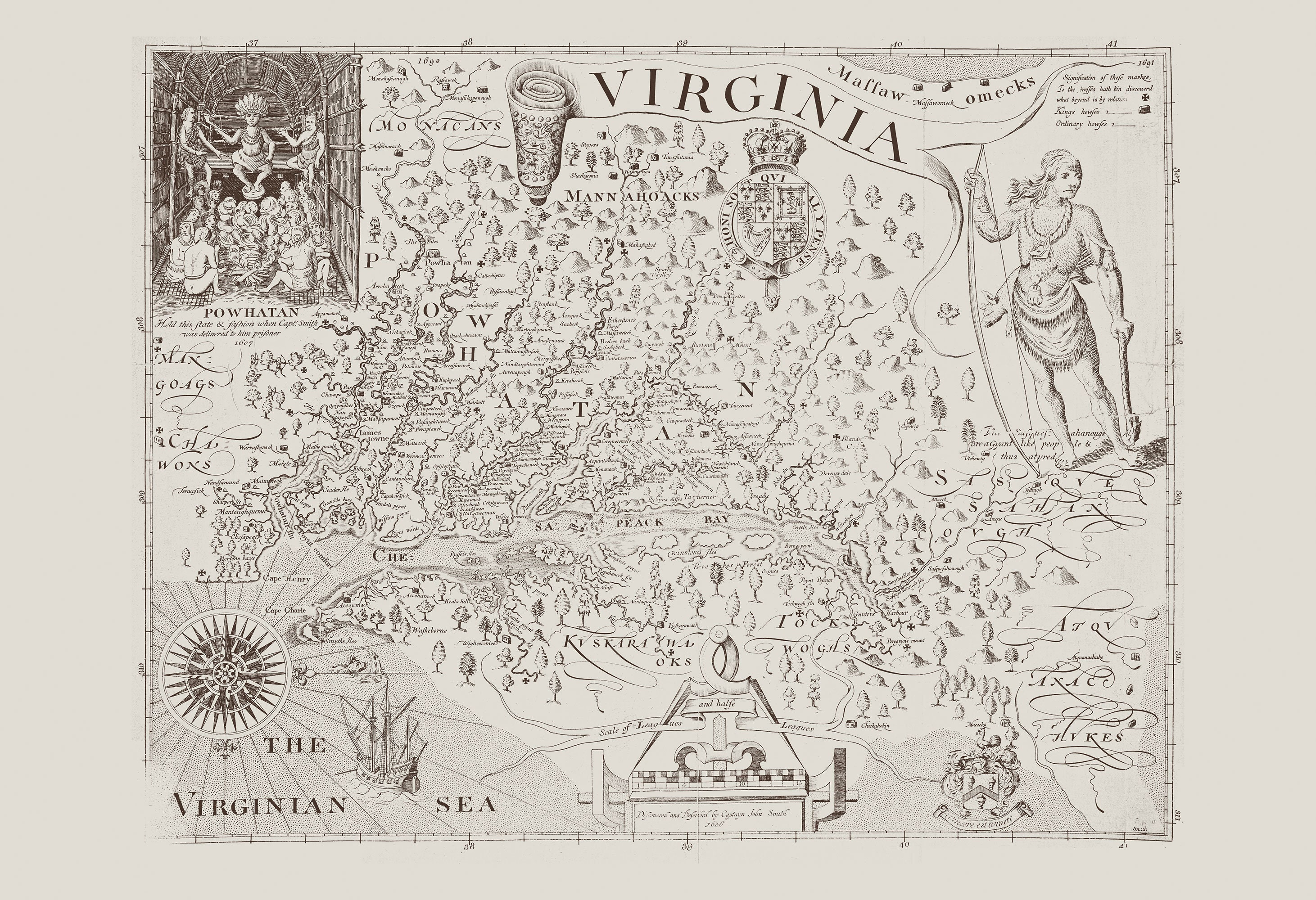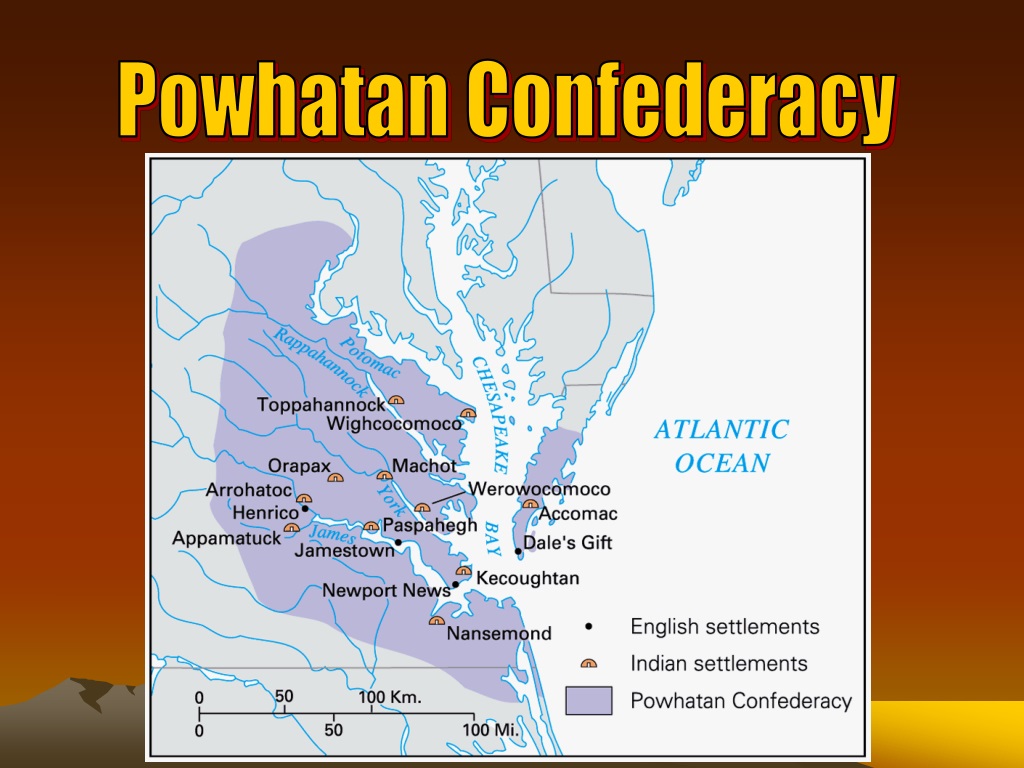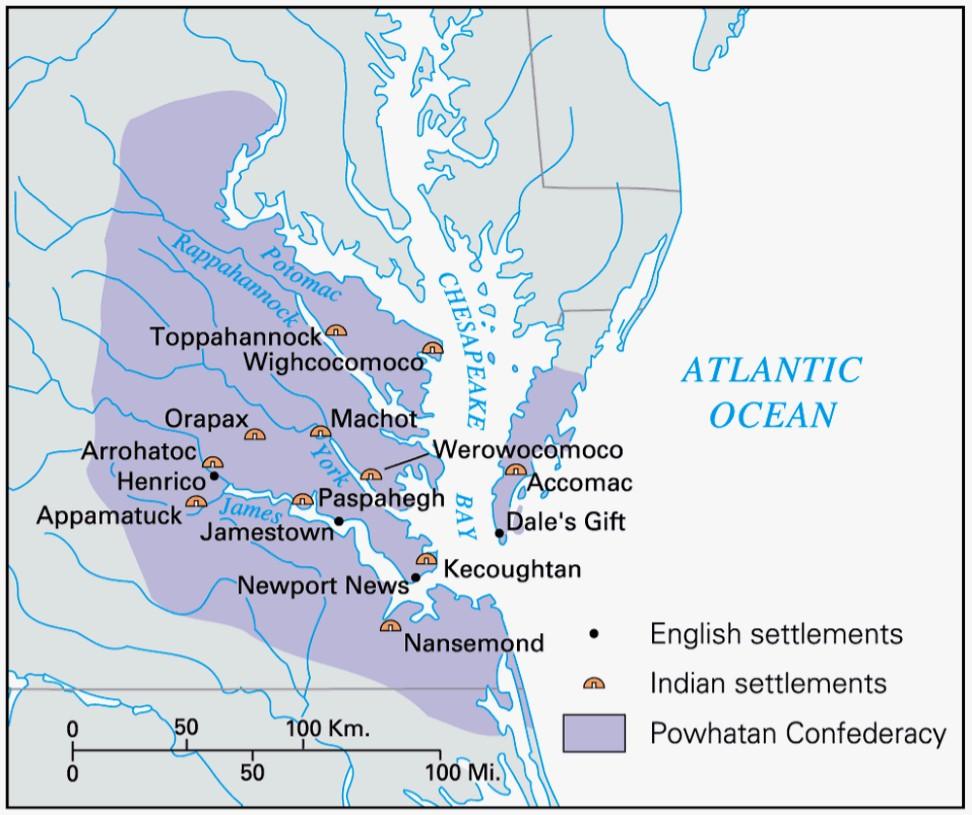
The historical map of the Powhatan Confederacy is far more than a mere cartographical representation of land; it is a profound narrative etched in the very topography of Tidewater Virginia. It speaks of power, identity, resilience, and the indelible marks left by centuries of human interaction, both cooperative and catastrophic. For the traveler and history enthusiast, understanding this map is to unlock a vital chapter in American history, one that predates and profoundly influenced the colonial narrative we often prioritize.
The Land Before Contact: A Geopolitical Canvas
To comprehend the Powhatan Confederacy, one must first grasp its geographical context. Tidewater Virginia, a serpentine lattice of rivers – primarily the James, York, Rappahannock, and Potomac – flowing into the vast Chesapeake Bay, was the heartland of the Powhatan people. This intricate network of waterways was not merely a backdrop but the lifeblood of the Confederacy. Rivers served as highways for dugout canoes, facilitating trade, communication, and swift military movements. The fertile floodplains along these rivers provided rich agricultural land for cultivating corn, beans, and squash, while the extensive forests teemed with game, and the Bay offered abundant fish and shellfish.
This landscape fostered a sophisticated understanding of resource management and territorial boundaries long before European arrival. The map, therefore, illustrates not empty wilderness but a meticulously organized territory, divided among numerous Algonquian-speaking tribes, each with its own village centers, hunting grounds, and fishing territories. It was a dynamic, living map, shaped by seasons, diplomacy, and occasional conflict, but always defined by an intimate relationship between people and place.

Wahunsenacawh: The Architect of the Confederacy
At its zenith, around the time of the English arrival in 1607, the Powhatan Confederacy was a paramount chiefdom, an alliance of approximately 30 distinct tribes, encompassing an estimated 15,000 people. This formidable political entity was largely the creation of one extraordinary leader: Wahunsenacawh, commonly known as Chief Powhatan. He inherited control over six tribes and, through strategic diplomacy, military conquest, and marital alliances, expanded his influence to unite dozens more.
The map of the Confederacy, under Wahunsenacawh, reveals a strategic mastermind at work. His capital, Werowocomoco, was strategically located on the north bank of the York River, offering both defensibility and easy access to the Bay and interior territories. The arrangement of tribes, with core allies closer to the center and more recently incorporated or less loyal groups on the periphery, reflects a carefully constructed political hierarchy designed to consolidate power, manage resources, and present a united front against potential rivals – both Native and, presciently, European. The identity of these tribes, such as the Pamunkey, Mattaponi, Chickahominy, Nansemond, Arrohateck, Appamatuck, and Paspahegh, are not just names on a map; they represent distinct communities, each with their own leadership (known as werowances), customs, and histories, yet bound by a shared language (Eastern Algonquian) and allegiance to Wahunsenacawh.
Mapping Power and Identity: The Tribal Territories

The map delineates the territories of these constituent tribes, each a vibrant community with its own werowance (chief) who governed local affairs but paid tribute to Wahunsenacawh. This tribute, often in corn, furs, or copper, was not merely a tax; it was a physical representation of allegiance and a mechanism for redistributing wealth and resources across the Confederacy, reinforcing collective identity.
Consider the Pamunkey and Mattaponi, central to the Confederacy, whose territories lay along the rivers bearing their names. These were powerful, historically significant tribes, often serving as Wahunsenacawh’s most loyal supporters. Their proximity to Werowocomoco underscored their importance. Further south, the Nansemond occupied lands along the Nansemond River, their identity tied to the rich fishing and hunting grounds of that region. To the west, tribes like the Monacan (a Siouan-speaking people) were often rivals, their territories marking the western frontier of Powhatan influence, a constant reminder of the dynamic nature of pre-colonial boundaries.
The map, therefore, is a testament to the sophisticated social and political organization of the Powhatan people. It illustrates a world where identity was deeply interwoven with ancestral lands, where village sites represented continuity across generations, and where the waterways were not barriers but connectors of a vast and interconnected Indigenous society.
The Arrival of Europeans and the Shifting Map
The arrival of English colonists at Jamestown in 1607 irrevocably altered this landscape and the very meaning of the Powhatan map. Initially, Wahunsenacawh viewed the English as another tribe, albeit a peculiar one, to be incorporated or managed within his existing political framework. The map began to show a new, alien presence – a small, fortified settlement on the James River, a tiny dot that would soon expand to consume vast swathes of Indigenous territory.
The early interactions were a complex dance of trade, suspicion, and intermittent conflict. John Smith’s famous encounters with Wahunsenacawh and Pocahontas (Matoaka) illustrate this tension – attempts at diplomacy mixed with displays of power. However, the English had a fundamentally different concept of land ownership: private property, fenced and exclusive, rather than shared territories with seasonal use rights. This clash of worldviews, coupled with insatiable English demand for land and the devastating impact of European diseases (to which Native peoples had no immunity), set the stage for inevitable conflict.
The Anglo-Powhatan Wars (1610-1614, 1622-1632, 1644-1646) systematically dismantled the Confederacy and redrew the map with brutal efficiency. The Great Massacre of 1622, led by Wahunsenacawh’s successor Opechancanough, was a desperate attempt to drive out the English, but it ultimately backfired, leading to intensified colonial retaliation. By the mid-17th century, the original Powhatan territories had shrunk dramatically. Treaties, often imposed under duress, confined surviving tribes to smaller reservation lands, many of which are still held by their descendants today. The map transformed from a representation of Indigenous sovereignty to a stark illustration of colonial encroachment and land dispossession. Many tribes vanished from the historical record, their identities absorbed or extinguished by disease and violence.
Enduring Legacy: Resilience and Reclaiming Identity
Despite the overwhelming pressures, the Powhatan people did not vanish. The narrative of the "vanishing Indian" is a colonial construct that erases the extraordinary resilience and adaptability of Native communities. While the Confederacy as a political entity ceased to function in its original form, the identity of many of its constituent tribes endured. The Pamunkey and Mattaponi, for instance, maintained continuous tribal governments on their reservation lands, recognized by Virginia for centuries, and eventually by the federal government.
The modern map of Virginia continues to reflect this enduring presence. Today, seven federally recognized tribes in Virginia trace their ancestry back to the Powhatan Confederacy: the Pamunkey Indian Tribe, the Mattaponi Indian Tribe, the Chickahominy Indian Tribe, the Eastern Chickahominy Indian Tribe, the Upper Mattaponi Indian Tribe, the Nansemond Indian Tribe, and the Rappahannock Tribe. Additionally, the Monacan Indian Nation, though not Algonquian-speaking, is another federally recognized tribe whose history is deeply intertwined with Virginia’s pre-colonial and colonial periods.

For these tribes, the historical map is not just a document of the past; it is a living testament to their continued existence, their ancestral lands, and their ongoing struggle to maintain and revitalize their cultural identity. Language programs are reviving Eastern Algonquian dialects, traditional crafts are being taught, and ceremonies are being held, connecting contemporary generations to the deep roots of their heritage. The map serves as a powerful reminder of what was lost but also what was defiantly preserved.
Experiencing the Powhatan Map Today: Travel and Education
For the modern traveler, understanding the Powhatan map translates into an immersive journey through Virginia’s history. It encourages looking beyond the colonial facades to see the layered history beneath.
- Jamestown Settlement and Historic Jamestowne: These sites offer crucial insights into the initial contact period. Jamestown Settlement, a living history museum, features recreated Powhatan villages, allowing visitors to step into the world of the 17th-century Powhatan people. Historic Jamestowne, the archaeological site of the original fort, continues to unearth artifacts that tell the story of both English and Native inhabitants, often side-by-side.
- Werowocomoco: The former capital of Wahunsenacawh on the York River is now a sacred archaeological site owned by the National Park Service and managed in partnership with Virginia’s Native tribes. While not always open to the public, its significance as the heart of the Confederacy offers a powerful sense of place.
- Tribal Lands and Cultural Centers: Visiting the Pamunkey Indian Museum and Cultural Center on the Pamunkey Reservation or the Mattaponi Indian Reservation provides an invaluable opportunity to learn directly from the descendants of the Confederacy. These centers often showcase traditional arts, offer educational programs, and share the contemporary stories of their communities.
- Virginia State Parks and Waterways: Exploring the rivers that defined the Confederacy – the James, York, and Rappahannock – whether by kayak, boat, or from the shores of state parks like York River State Park or Powhatan State Park, allows for a geographical appreciation of the historical map. Imagine the canoes traversing these waters, the villages nestled along their banks, and the intricate network of life that thrived here for millennia.
- Monacan Ancestral Lands: While not Powhatan, a visit to the Monacan Ancestral Museum in Bear Mountain, Amherst County, provides another perspective on Virginia’s rich Indigenous heritage and the distinct cultural identity of a neighboring nation.
Conclusion
The Powhatan Confederacy historical map is not a relic of a bygone era, confined to dusty archives. It is a dynamic, living document that reveals the deep history, complex identity, and enduring spirit of the Indigenous peoples of Virginia. It invites us to look beyond simplistic narratives and recognize the sophisticated societies that flourished long before European arrival. For the traveler, it offers a profound opportunity to connect with the land, understand its true origins, and appreciate the ongoing cultural vitality of the Powhatan tribes. By engaging with this map, we not only learn history but also foster a deeper respect for the diverse identities that continue to shape the fabric of the Commonwealth and the nation. It is a journey not just through space, but through time, memory, and the powerful, persistent pulse of Indigenous heritage.
